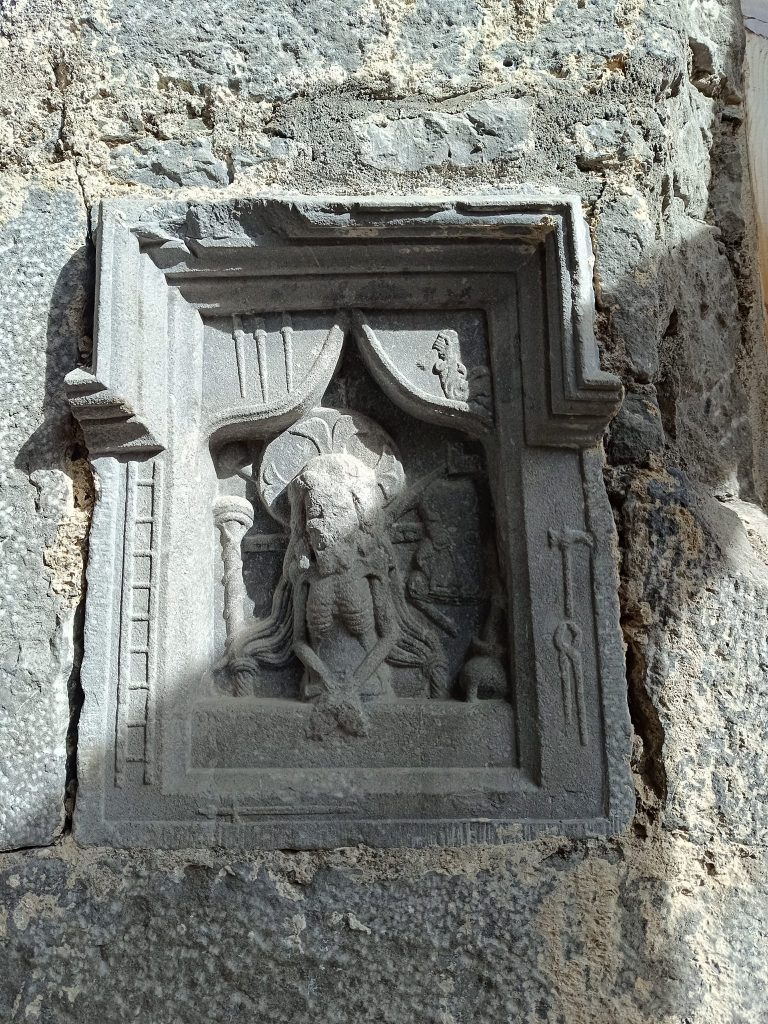Ennis Friary
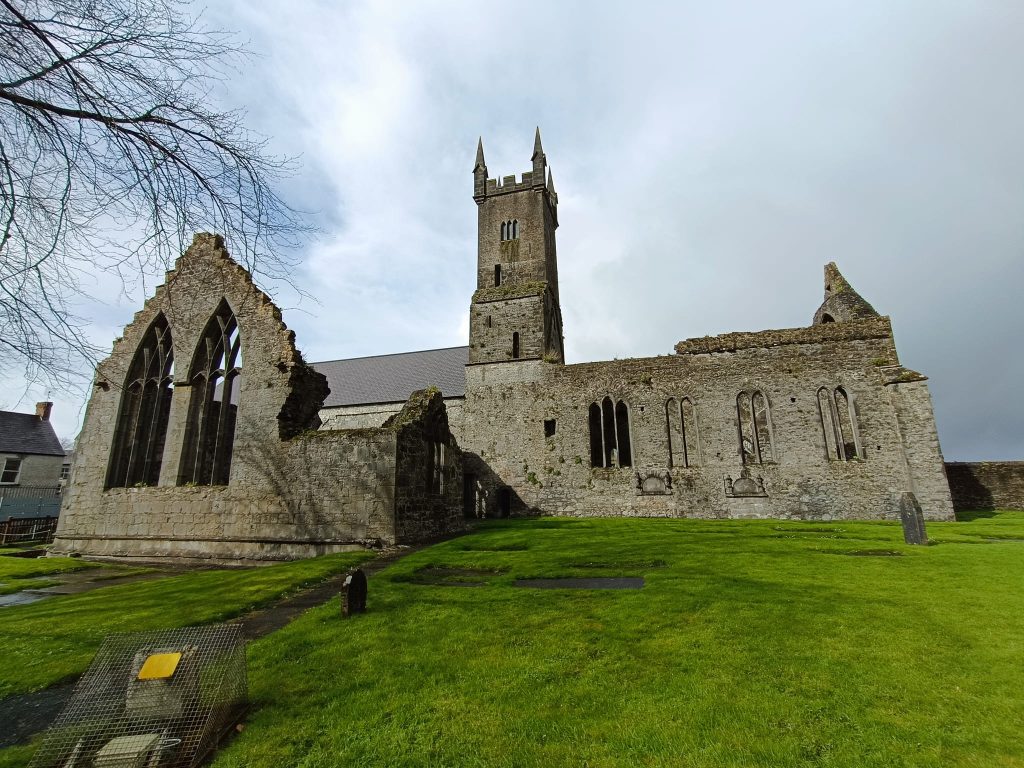
A New Adventure in Ireland
Moving to a new country is always a thrilling adventure, filled with discoveries around every corner. As a recent transplant to Ireland, I found myself yearning to immerse in the rich tapestry of history that this country offers. On our way back from Galway, we stopped by the quaint town of Ennis in County Clare, where I discovered the enchanting Ennis Friary.
We not really look up this place before dropping by. That is the beauty of having the heritage card where entrance to OPW sites are free. This allows us to drop by a town and visit the nearest historic of cultural sites along our road trip.
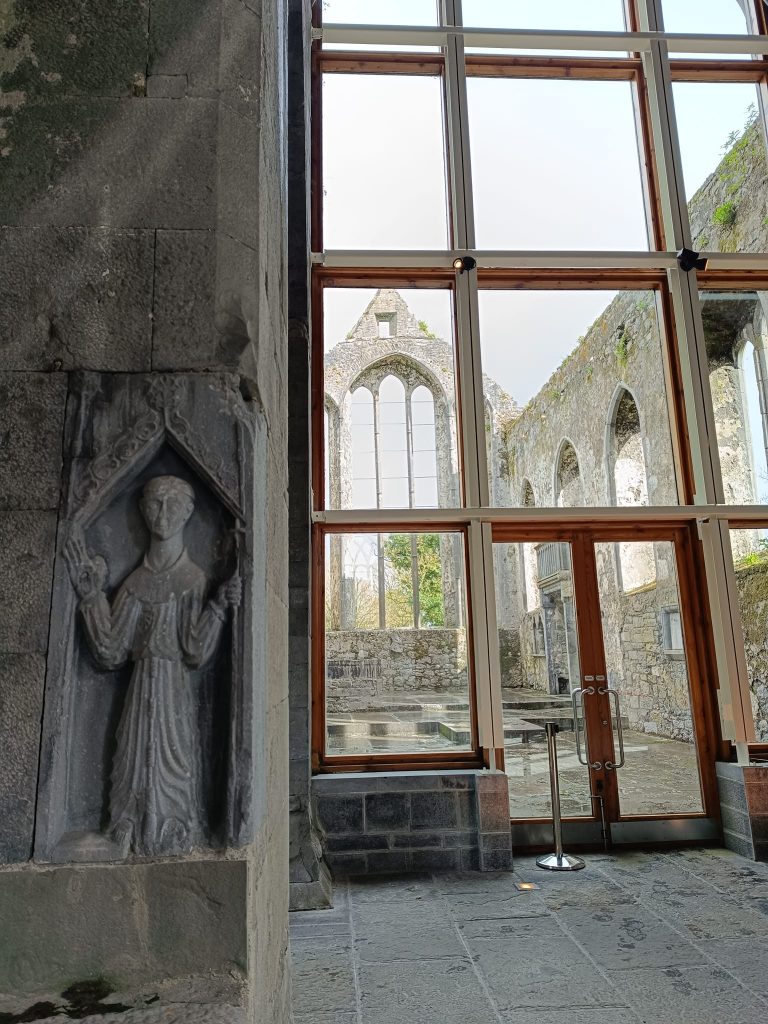
First Impressions
As I approached the Friary, the grey stone walls stood tall against the backdrop of a brilliant blue sky. The structure, with its gothic arches and intricate carvings, transported me back to medieval Ireland. Ennis Friary, I learned, was founded in the mid-13th century by the O’Brien dynasty, one of Ireland’s most powerful families.
Most of the heritage sites that I have visited are in ruins. I am pleasantly surprised that Ennis Friary has been renovated and a roof added to protect the stone carvings. The roof at least helps to keep us dry during our visit. Ireland can be a very wet place most of the time.
A Glimpse into History
The history of the Friary is as rich and varied as the land itself. Originally established as a Franciscan monastery, it became a significant religious and cultural hub. The Friary housed a community of friars who dedicated their lives to prayer, education, and serving the local community. Walking through the ancient ruins, I could almost hear the whispered prayers and echoes of Gregorian chants that once filled the air.
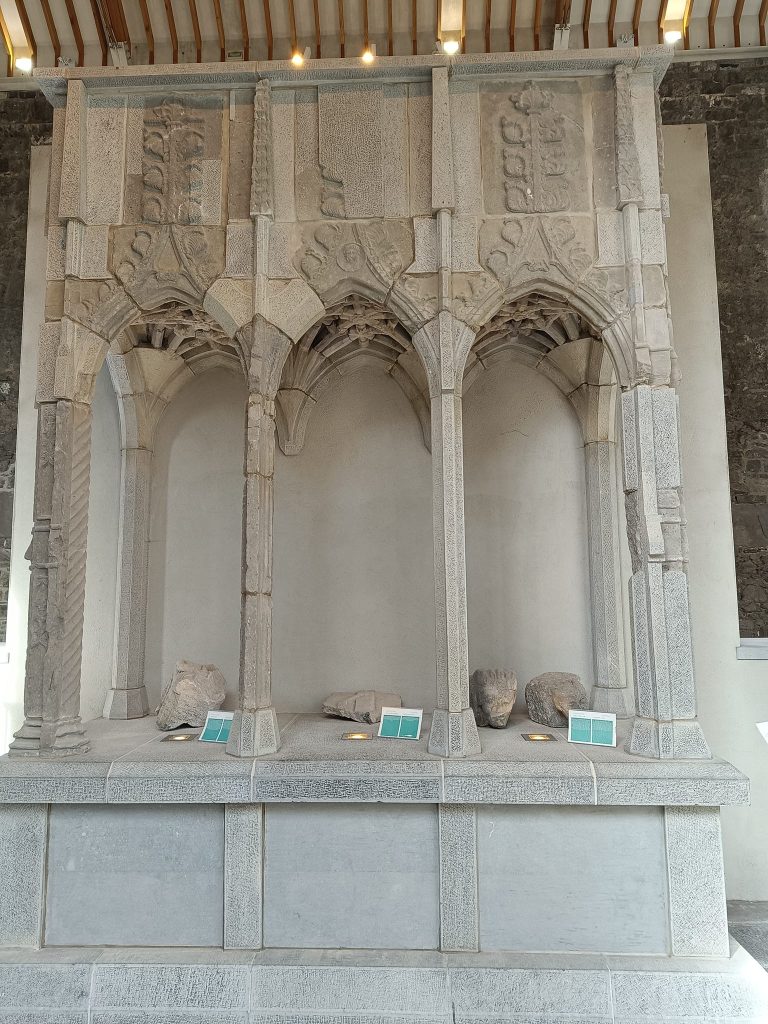
Artistry and Devotion
One of the highlights of my visit was the impressive collection of medieval carvings and sculptures. The Friary is renowned for its beautiful limestone carvings that depict scenes from the Bible, including the Passion of Christ. These intricate details offer a glimpse into the craftsmanship and devotion of the friars who once called this place home.
As I explored the Friary, I was struck by the sheer artistry displayed in the carvings. The figures were delicately chiseled, each expression capturing a moment frozen in time. One particular carving that stood out was the depiction of Christ on the cross, his face etched with a mix of suffering and serenity. The friars who created these works were not merely skilled artisans; they were deeply devoted individuals who used their talents to express their faith.
Another remarkable aspect of the Friary’s artistry is the tombs and effigies that lie within its walls. Many of these tombs belong to the O’Brien family, the original patrons of the Friary. The effigies are adorned with intricate details, from the folds of their garments to the solemn expressions on their faces. These monuments serve as a testament to the friars’ reverence for their patrons and the enduring legacy of the O’Brien dynasty.
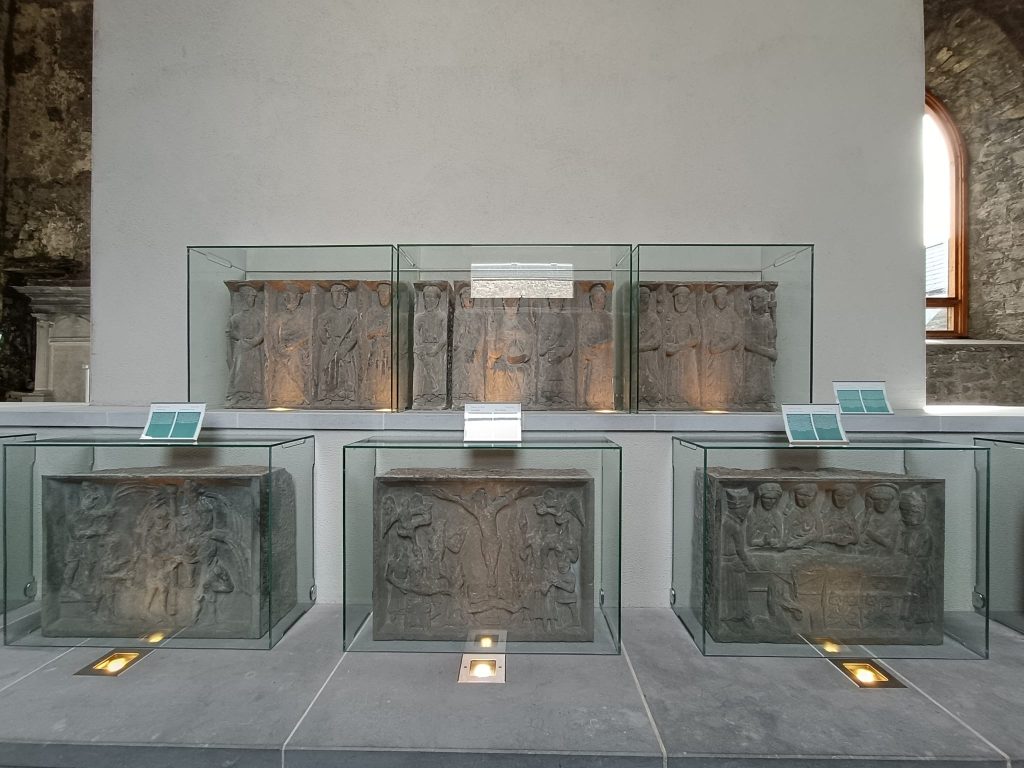
The artistry of Ennis Friary is not limited to its carvings and manuscripts. The architecture of the Friary itself is a marvel to behold. The soaring arches, ribbed vaults, and intricate tracery all reflect the Gothic style that was prevalent during the Friary’s construction. The careful attention to detail in the design and execution of the Friary’s structure is a testament to the skill and dedication of the craftsmen who built it.
As I wandered through the Friary, I couldn’t help but feel a deep appreciation for the artistry and devotion that have been preserved within its walls. Each carving, tomb, and architectural feature tells a story of faith, dedication, and artistic brilliance. Ennis Friary is not just a historical site; it is a living testament to the enduring power of art and devotion.
